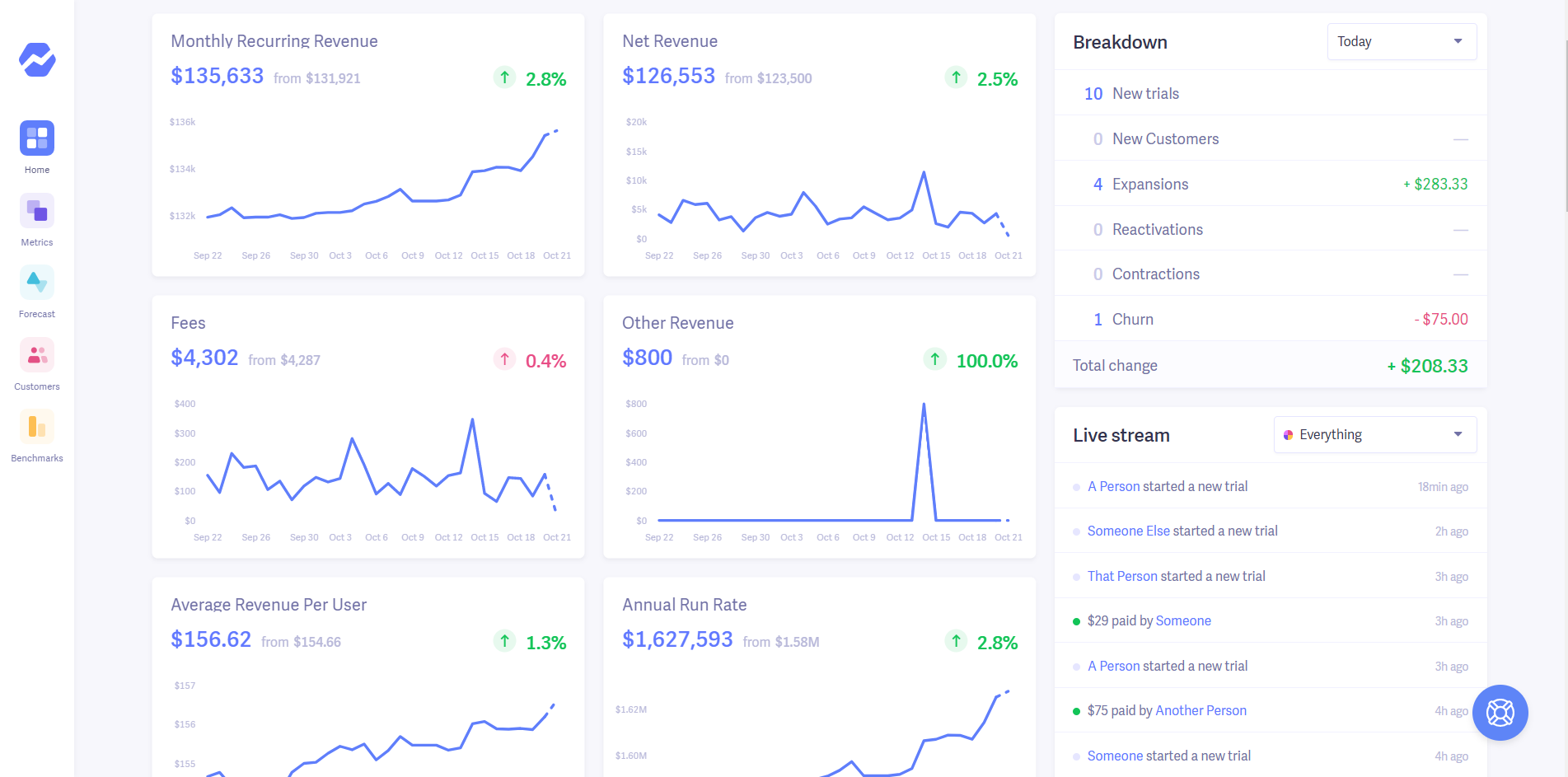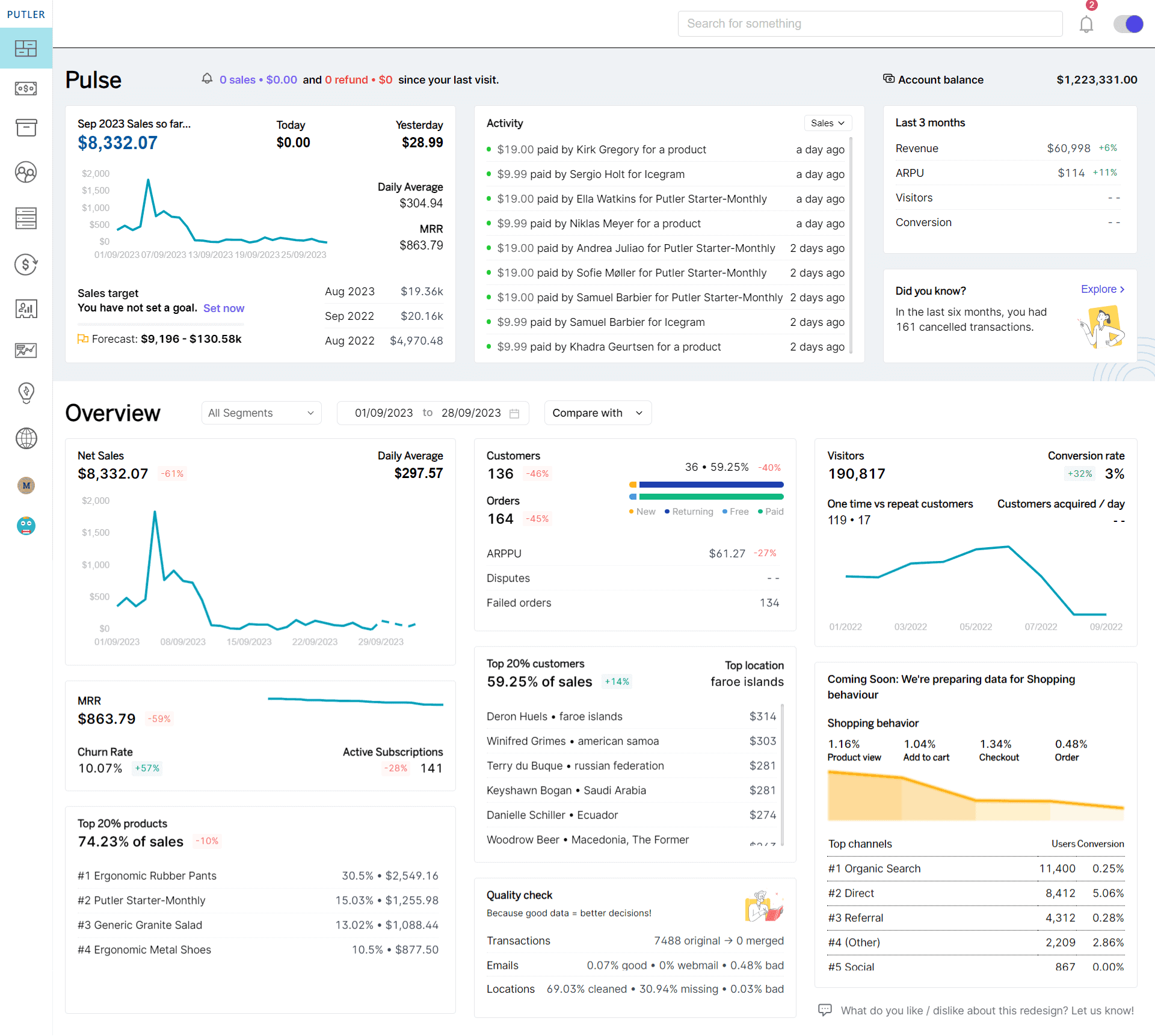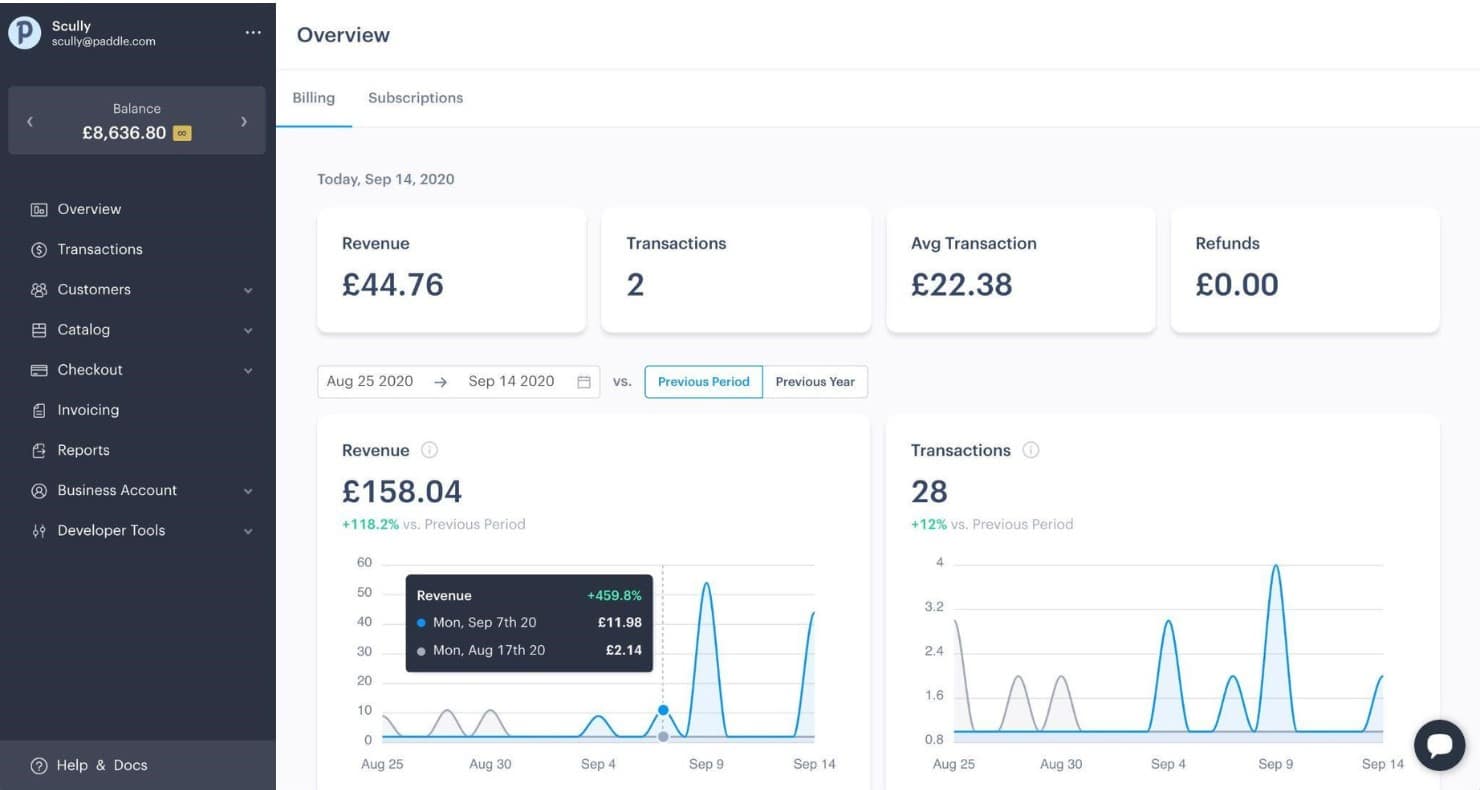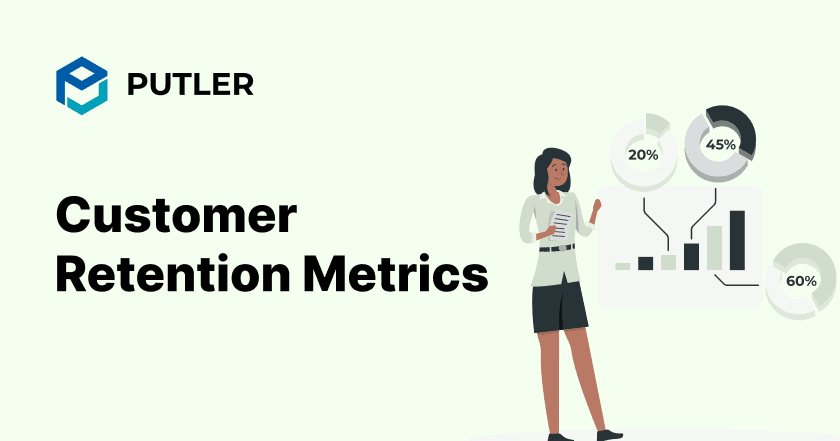Customer retention isn’t just a goal; it’s the cornerstone of business longevity.
In today’s fiercely competitive landscape where attention spans are fleeting, it is vital to ensure customers keep returning.
But how do you ensure your efforts are paying off? Enter customer retention metrics.
Prepare to explore customer retention metrics as we discuss the top ten metrics every business should track.
From churn rates to customer lifetime value, we will show you exactly how to measure them effectively.
Whether you’re a seasoned marketer or just dipping your toes into the waters of customer retention, this guide is your roadmap to success.
So let’s dive in and start measuring what truly matters.
What are customer retention metrics?
Customer retention metrics, also known as user retention metrics, are the vital signs of your business’s relationship with its customers.
Think of them as the pulse of your customer base—indicating how satisfied, engaged, and loyal your customers are over time.
In simpler terms, customer retention metrics help you answer the fundamental question: Are we keeping our customers happy and persuading them to come back for more?
These metrics provide valuable insights into your customer retention efforts.
Moreover, they allow you to assess your strategies’ effectiveness and identify improvement areas.
So, now that you know what customer/user retention metrics are, let’s dig deeper into the process of measuring them.
How to measure customer retention rate?
Stating simply, customer retention rate tells you how well you retain your customers over a specific period.
Here’s a straightforward approach to calculating it:
- Choose your time frame: Decide on the period you want to measure, whether it’s monthly, quarterly, or annually.
- Count your customers: Determine how many customers you had at the beginning of the period (let’s call it “B”) and how many you have at the end (let’s call it “E”).
- Calculate retention rate: Considering “N” represents the number of new customers acquired during the period, use this formula to calculate retention rate: ((E – N) / B) x 100.
- Interpret the results: A higher retention rate indicates stronger customer loyalty, while a lower rate may signal areas for improvement in your retention strategies.
With this simple method, you can track your customer retention rate and gauge the effectiveness of your retention efforts.
If you are wondering why customer retention is important, check out this blog here.
Now, let’s move on to explore the top customer retention metrics!
Top 10 customer retention metrics to measure retention
When it is about measuring customer retention, these metrics are your go-to indicators.
Let’s break them down:
Customer Retention Rate (CRR)
This shows how well you retain customers over a specific period.
Keeping a close eye on CRR allows you to gauge the effectiveness of your retention strategies and identify areas for improvement.
Customer Churn Rate
Measures the rate at which customers stop doing business with you.
Understanding churn rate helps you pinpoint where your customer experience might fall short and take proactive measures to address it.
Sales Churn Rate
Measures the rate at which sales are dwindling.
The reasons behind the increase in the sales churn rate are order cancellation, low order value placing, additional costs like taxes, etc. It shows that your customers are not buying from you like before.
The only way to ensure customer retention is to release attractive deals or send out discount offers when your customers are most active on your site. This way, the sales churn rate will fall and your customers will keep buying from you.
Loyal Customer Rate
This tells about the number of customers who make repeat purchases.
Know what drives your loyal customers to stay. Leverage that to create positive word-of-mouth and grow testimonials for your business.
Besides, you also need to focus on customers who purchased once only, ones who rarely buy, or customers who might leave if you do not attend.
Customer Lifetime Value (CLTV)
Predicts the total revenue a customer will generate throughout their relationship with your business.
By focusing on CLTV, you can tailor your marketing efforts to high-value customers and maximize their lifetime value.
Monthly Recurring Revenue (MRR)
Indicates the predictable revenue generated from subscription-based services each month.
Tracking MRR provides insights into the stability and growth of your recurring revenue streams.
Average Order Value (AOV)
Tracks the average amount customers spend on each transaction.
Increasing AOV can directly impact your bottom line and boost profitability.
Repeat Purchase Rate
Measures the percentage of customers who make multiple purchases.
A high repeat purchase rate signifies satisfied customers and strong brand loyalty.
Customer Growth Rate
Reflects the rate at which your customer base is expanding over time.
A positive customer growth rate indicates healthy business growth and market penetration.
Average Revenue Per User (ARPU)
Calculates the average revenue generated by each customer.
Monitoring ARPU helps you identify opportunities to increase revenue per customer through upselling or cross-selling.
If you are interested in customer retention management, check out this blog, here.
Now, let’s explore the best customer retention tools available in the market.
Best customer retention tools to reduce churn and drive loyal customers
Utilizing the right tools can make all the difference when it comes to customer retention, reducing churn, and boosting loyalty.
Let’s explore some of the best customer retention tools that can help you achieve the same:
Baremetrics

Baremetrics provides comprehensive analytics and insights specifically tailored for subscription-based businesses.
It offers detailed metrics such as churn rate, monthly recurring revenue (MRR), and customer lifetime value (CLTV), empowering businesses to make data-driven decisions to improve retention.
However, it may have a steeper learning curve for beginners.
Pricing: Baremetrics’ pricing has several slabs. Their Metrics plan starts at $108 per month.
Putler

Putler stands out for its robust features tailored for eCommerce businesses.
Its advanced RFM (Recency, Frequency, Monetary) analysis helps identify loyal customers, potential churn risks, and campaign opportunities.
Beyond RFM analysis, Putler provides a comprehensive suite of metrics to track revenue, visitors, and conversions over time.
With diverse filters and in-depth tracking of purchase history, products bought together, and demographics, and more, Putler enables hyper-targeted campaigns to boost retention rates effectively.
Putler also predicts churn by monitoring changes in customer behavior and spending habits, empowering businesses to address potential risks proactively.
Furthermore, Putler analyzes customer behavior patterns such as purchase frequency, repetition, and average order value to optimize retention strategies.
With comprehensive web analytics, Putler offers a holistic view of eCommerce performance, driving customer retention and long-term success.
Pricing: Putler’s plans are monthly revenue-based and start at $20 per month.
Paddle

Paddle offers a unified platform for subscription management and revenue optimization, particularly suitable for SaaS businesses.
It streamlines operations with features like payment processing, subscription renewals, and revenue reporting.
However, pricing may be higher compared to other solutions, especially for businesses with high transaction volumes.
Pricing: Paddle has customized pricing based on business requirements.
By leveraging the insights provided by these tools, businesses can streamline their customer retention efforts and drive sustainable growth.
But, what helps businesses even more, is accurate, enriched, centralized data. Let’s understand why.
Increase customer retention with data
Harnessing the power of data is crucial for boosting customer retention.
Here’s why accurate, cleansed, and centralized data matters:
- Tailored strategies: Access to comprehensive customer data allows businesses to tailor their retention strategies to meet individual needs and preferences effectively.
- Informed decision-making: Centralized data provides valuable insights that empower businesses to make informed decisions about their retention efforts.
- Fetching data from multiple sources: Putler seamlessly integrates with various data sources to gather a complete picture of customer interactions and behaviors.
- Enriching insights: By enriching data, Putler provides comprehensive insights that enable businesses to implement targeted retention tactics.
This is where eCommerce analytics tools like Putler step in.
Yes, Putler takes data utilization to the next level by:
So, there’s no doubt in the fact that leveraging data effectively can significantly enhance your customer retention efforts.
And, this further drives long-term loyalty and business success.
Conclusion
Retaining customers isn’t just a goal; it’s the lifeblood of business longevity.
From understanding key user retention metrics to leveraging powerful tools like Putler and harnessing the potential of data, we’ve provided you with the tools and insights needed to thrive.
Now, with this knowledge, it’s your turn to take action.
Implement what you’ve learned, build lasting relationships, and watch your business soar.
Remember, in the quest for customer retention, every interaction counts.
So, seize the opportunity, make the most of it, and pave the way for long-term success.
FAQs
Why is measuring customer retention important for SaaS businesses?
Measuring customer retention in SaaS is crucial for assessing customer satisfaction, identifying areas for improvement, and gauging the effectiveness of product offerings, ultimately leading to increased revenue and long-term success.
What is the difference between customer acquisition and customer retention?
Customer acquisition focuses on attracting and converting new customers, while customer retention aims to maintain and nurture existing customer relationships to encourage repeat purchases and long-term engagement.
What is the KPI for retention?
The key retention KPI includes metrics like customer retention rate, churn rate, customer lifetime value (CLTV), repeat purchase rate, and average order value (AOV), which help businesses track retention success and optimize strategies.
